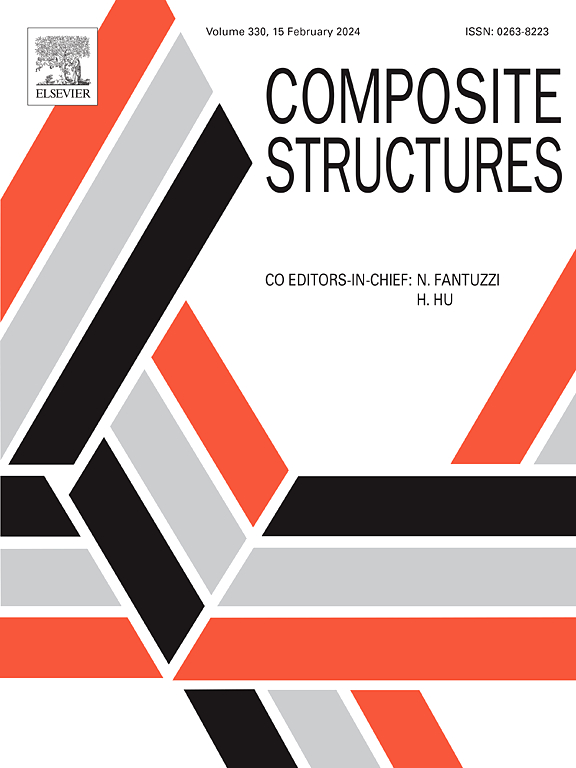在一个生产周期内制成的复合薄壁 L 型材的损坏情况
IF 7.1
2区 材料科学
Q1 MATERIALS SCIENCE, COMPOSITES
引用次数: 0
摘要
本文讨论了薄壁层压 L 型材在均匀缩短条件下的实验结果。本研究的目的是探讨精确制造的薄壁结构在极限状态下是否表现出类似的行为。测试样品由 18 层碳纤维层压板组成,标称结构厚度为 0.81 毫米。使用三维扫描仪对所有样品进行了实际几何分析。使用试验机对支柱进行均匀缩短,直至其结构失效。此外,还采用了声发射和 Aramis 系统。尽管是在一个制造周期内生产的,但还是发现了三种不同形式的损坏:靠近样品中心的一侧壁上出现裂缝、两侧壁开裂以及一端破碎。对获取的声发射信号进行分析,以确定损伤开始时的载荷,以及基体和纤维断裂时的力矩。样品制作的精度(包括厚度和几何缺陷)对单角薄壁型材受压时的损坏形式有很大影响。本文章由计算机程序翻译,如有差异,请以英文原文为准。
Damage of composite thin-walled L profiles made in one production cycle
The experimental results for a thin-walled laminated L-profile under uniform shortening are discussed in this paper. The objective of this study is to explore if accurately manufactured thin-walled structures exhibit similar behaviour at their limit state. Test samples consisted of 18 carbon laminate plies with a nominal structural thickness 0.81 mm. Geometry analysis of real samples was carried out on all samples using a 3D scanner. The columns are subjected to uniform shortening using a testing machine until they fail structurally. Additionally, acoustic emission and the Aramis system are employed. Despite being produced in a single manufacturing cycle, three different form of damage are identified: a crack in one wall near the sample’s center, opening of both walls, and crushing of one end. The acoustic emission signals acquired are analyzed to determine the load at which damage initiates, as well as the moments at which matrix and fiber breakage occur. The accuracy of the sample production (including its thickness and geometrical imperfections) has a significant impact on the form of damage that occurs when thin-walled profiles with one corner are compressed.
求助全文
通过发布文献求助,成功后即可免费获取论文全文。
去求助
来源期刊

Composite Structures
工程技术-材料科学:复合
CiteScore
12.00
自引率
12.70%
发文量
1246
审稿时长
78 days
期刊介绍:
The past few decades have seen outstanding advances in the use of composite materials in structural applications. There can be little doubt that, within engineering circles, composites have revolutionised traditional design concepts and made possible an unparalleled range of new and exciting possibilities as viable materials for construction. Composite Structures, an International Journal, disseminates knowledge between users, manufacturers, designers and researchers involved in structures or structural components manufactured using composite materials.
The journal publishes papers which contribute to knowledge in the use of composite materials in engineering structures. Papers deal with design, research and development studies, experimental investigations, theoretical analysis and fabrication techniques relevant to the application of composites in load-bearing components for assemblies, ranging from individual components such as plates and shells to complete composite structures.
 求助内容:
求助内容: 应助结果提醒方式:
应助结果提醒方式:


